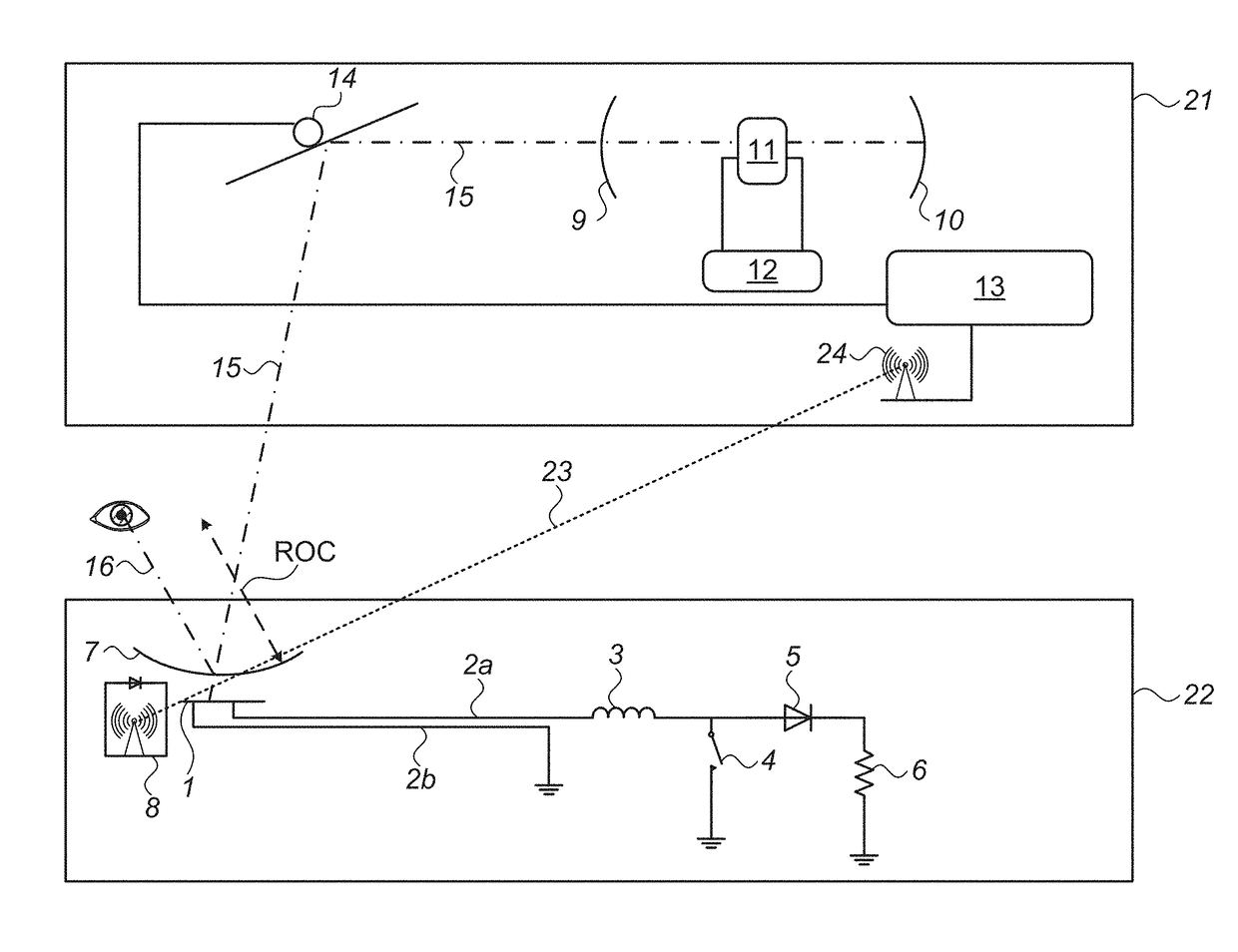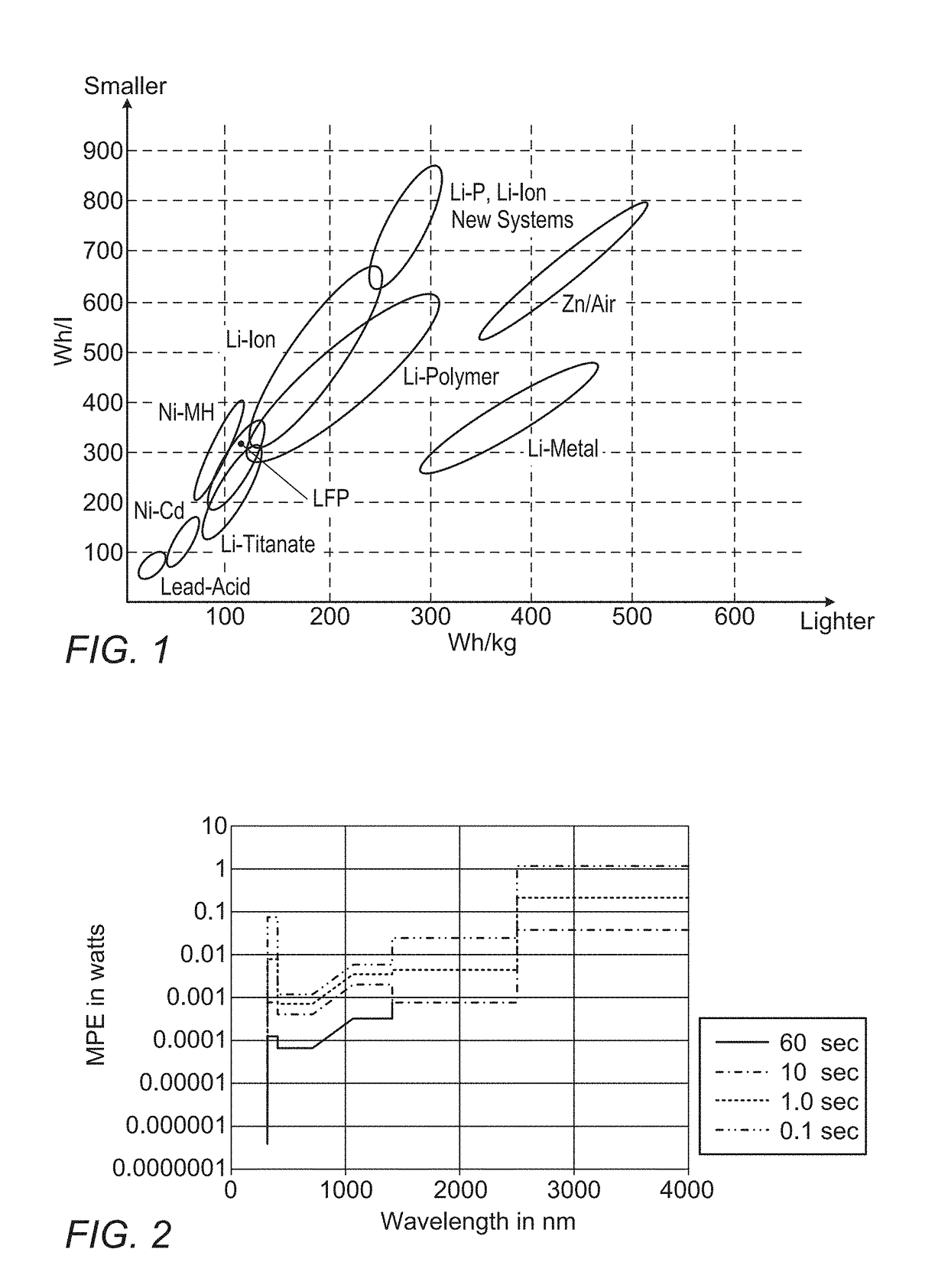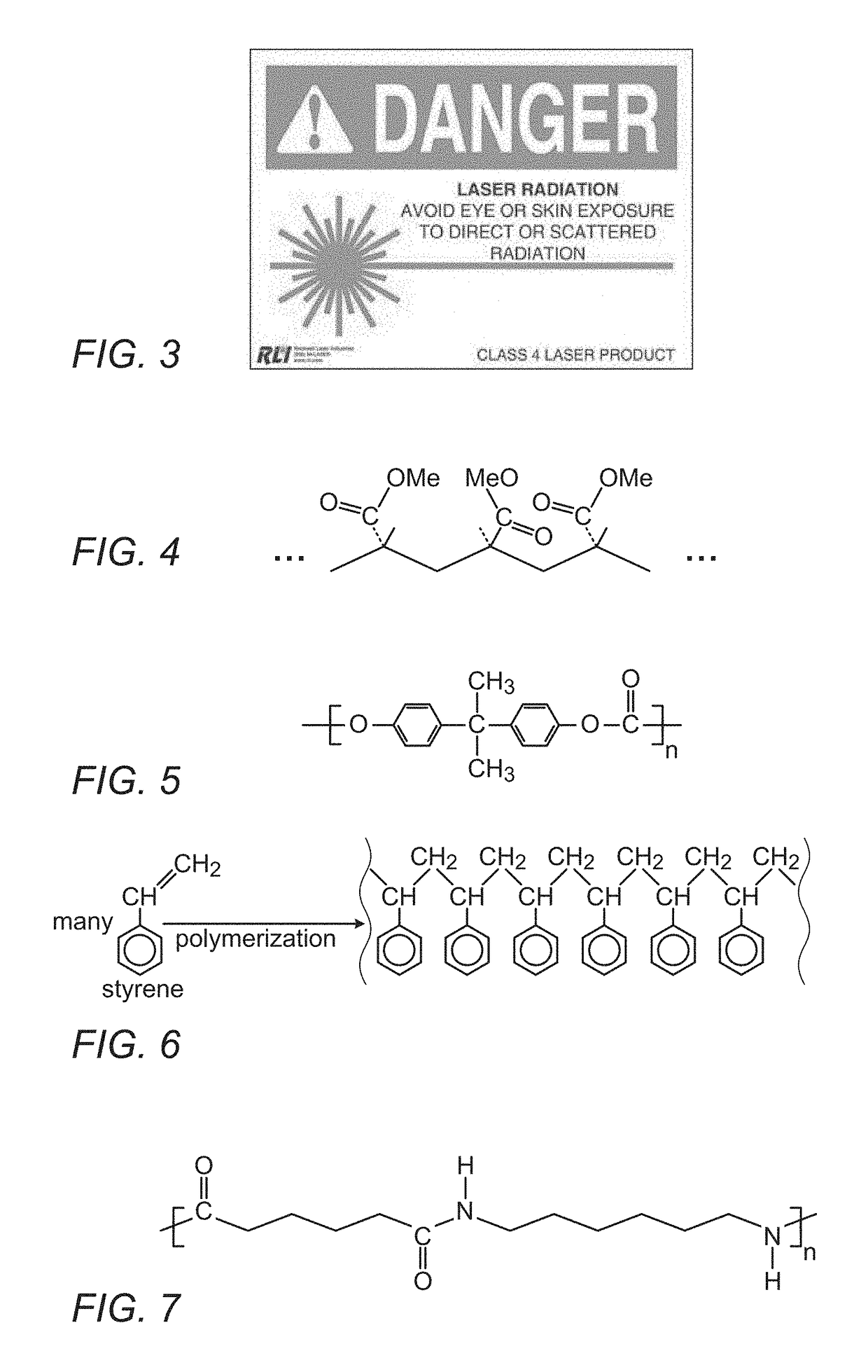System for optical wireless power supply
a wireless power supply and wireless technology, applied in the field of wireless power supply systems, can solve the problems of increasing system costs and limited laser radiance of systems, and achieve the effect of reducing the small gain of the gain medium and lowering the radiance emitted
- Summary
- Abstract
- Description
- Claims
- Application Information
AI Technical Summary
Benefits of technology
Problems solved by technology
Method used
Image
Examples
Embodiment Construction
[0184]In view of the above described considerations, one exemplary implementation of the optical wireless power supply systems of the present disclosure could be a system tuned to work in between the first overtone of the C—H absorption at 6940 cm−1 and the second overtone of the C—H absorption at 8130 cm−1. Such overtone bands are less known bands, containing much less chemical information, and arise from essentially forbidden quantum mechanical transitions, and are only allowed due to complex mechanisms. Consequently, they provide wide, weak absorption bands, exactly as preferred for this application, but have found significantly less use in analytical chemistry. The broad nature of the bands allows for detecting various different polymer compositions, while the weak absorption allows the system to continue operation even in the vicinity of organic dirt and fingerprints. This makes these lines significantly less useful for typical uses of absorption measurements, but ideal for the...
PUM
 Login to View More
Login to View More Abstract
Description
Claims
Application Information
 Login to View More
Login to View More - R&D
- Intellectual Property
- Life Sciences
- Materials
- Tech Scout
- Unparalleled Data Quality
- Higher Quality Content
- 60% Fewer Hallucinations
Browse by: Latest US Patents, China's latest patents, Technical Efficacy Thesaurus, Application Domain, Technology Topic, Popular Technical Reports.
© 2025 PatSnap. All rights reserved.Legal|Privacy policy|Modern Slavery Act Transparency Statement|Sitemap|About US| Contact US: help@patsnap.com



